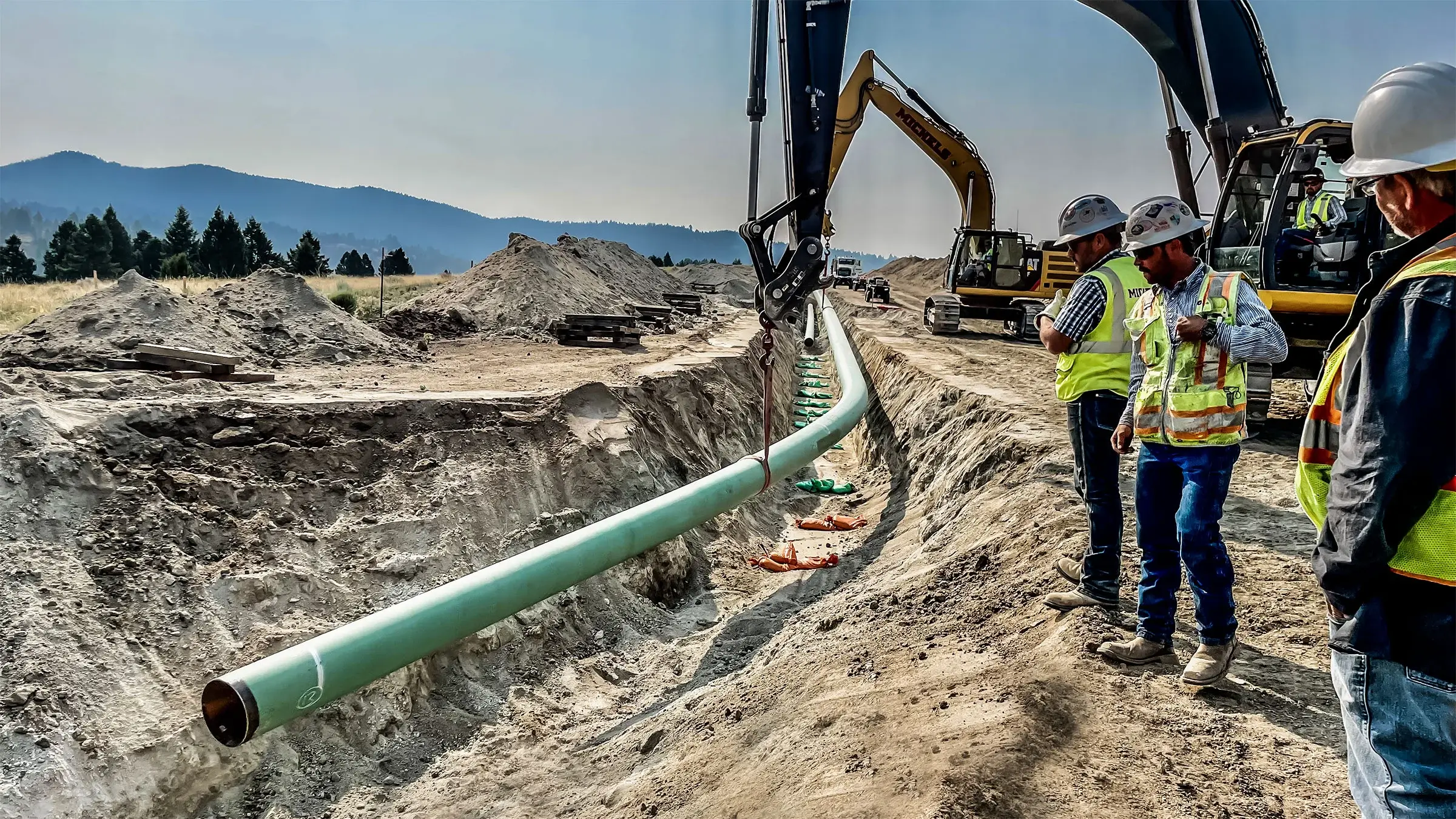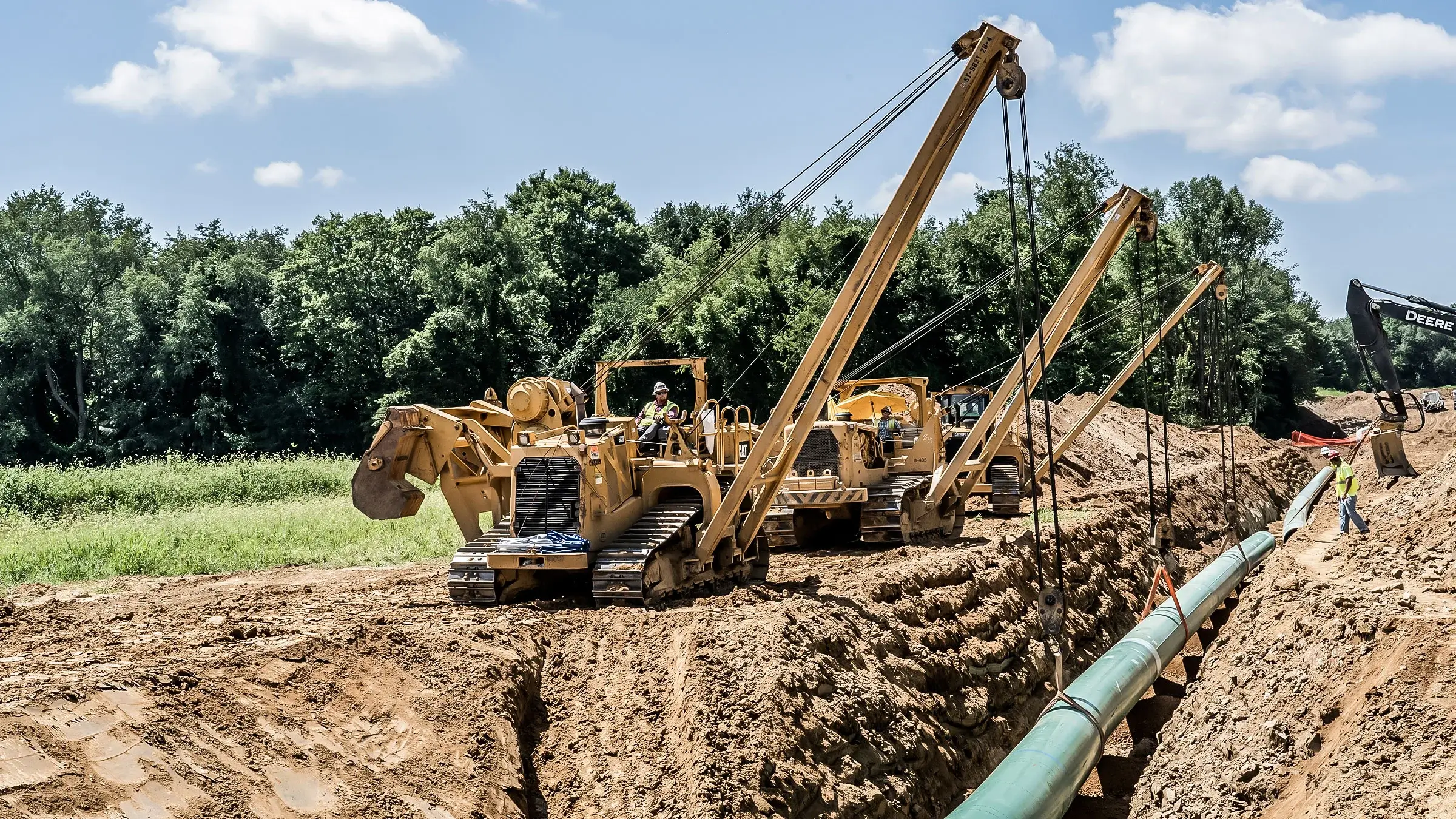When to Call For Immediate Help From Creek Pipe trenching services
Wiki Article
The Importance of Pipeline Construction: Discovering the Services Provided in the Sector
Pipeline construction is an important component of contemporary framework. It assists in the transport of important sources like oil, gas, and water. The sector includes numerous services, including planning, website prep work, and installation. Each phase needs accuracy and adherence to security requirements. As communities rely on these systems for their livelihoods, understanding the complexities of pipe construction discloses its relevance and potential obstacles. What factors influence the success of these jobs?Summary of Pipeline Construction Providers
Pipeline construction solutions incorporate a range of specialized activities made to help with the setup of pipelines for moving various materials, consisting of oil, gas, and water. These services normally consist of website prep work, excavation, setup of pipeline sections, and backfilling. Competent labor and sophisticated devices are essential for ensuring each phase is performed with precision and safety.Safety protocols are extremely important, as these tasks often entail collaborating with unsafe products and in difficult environments. Quality assurance actions identify that the pipes satisfy industry criteria and policies. Furthermore, the services might include trenchless innovation, which reduces surface disruption.Environmental considerations play a significant role in pipe construction, needing evaluations and mitigations to shield bordering environments. In general, pipeline construction solutions are essential for establishing the framework needed for power and water circulation, sustaining both economic growth and social needs.Preparation and Design in Pipeline Projects
Efficient planning and layout are essential elements of successful pipeline projects, ensuring that all elements are meticulously resolved before construction starts. This stage involves detailed expediency studies that examine the technological, economic, and ecological aspects influencing the job. Engineers and designers work together to produce comprehensive strategies that outline the pipe course, materials, and construction approaches, aligning with regulatory needs and industry standards.Advanced software application and modeling strategies are typically used to mimic various situations, maximizing the design for effectiveness and safety and security. Ecological impact analyses are carried out to alleviate possible harm to environments and areas, reflecting a commitment to lasting methods. In addition, stakeholder engagement is necessary, fostering interaction and addressing concerns from impacted celebrations. Eventually, reliable planning and layout established the structure for a pipe task, minimizing risks and guaranteeing a streamlined construction process, ultimately contributing to the overall success of the operation.Site Preparation and Excavation
Detailed site preparation and excavation are essential action in the pipeline construction procedure. This stage entails an in-depth evaluation of the land where the pipeline will be installed. Project teams perform surveys to recognize dirt kinds, topography, and existing energy lines to ensure a risk-free and efficient excavation. Proper website preparation reduces environmental impact and facilitates smoother construction operations.Excavation follows, where hefty equipment is employed to remove dirt and rock, producing a trench that satisfies the specified deepness and size for the pipe. This procedure should stick to safety laws and ecological guidelines to stop damage to bordering ecosystems.Additionally, disintegration control steps are executed to support the site throughout and after excavation. Reliable site prep work and excavation add significantly to the total success of pipe projects, laying a solid structure for the subsequent stages of construction.Pipeline Installation Methods
Pipeline installation techniques are essential for the effective implementation of facilities jobs. Two noticeable techniques consist of trenchless innovation, which decreases surface area disruption, and the open-cut excavation procedure, known for its uncomplicated method. Each strategy provides distinct advantages and factors to consider depending on task requirements and ecological factors.Trenchless Technology Methods
While standard methods of pipeline installment typically involve substantial excavation, trenchless technology techniques supply a more effective and eco pleasant option. These cutting-edge techniques, such as horizontal directional exploration and pipeline bursting, reduce surface area interruption by enabling the installment of pipelines without substantial digging. This not just lowers the environmental effect yet additionally substantially lowers labor and repair prices. Trenchless methods facilitate the setup of pipes in urban areas where standard excavation would certainly be not practical or destructive to existing infrastructure. Additionally, these strategies can accommodate various soil types and conditions, making them versatile services for pipeline construction. Inevitably, trenchless technology stands for a substantial innovation in the pipe sector, advertising sustainability and operational effectiveness.
Open-Cut Excavation Refine
Open-cut excavation stays a fundamental technique in pipe setup, defined by the straight excavation of a trench to lay pipes. This method entails getting rid of soil and various other products to produce a trench of sufficient deepness and size, allowing for the placement of pipelines at the needed grade. Open-cut excavation is often favored for its cost-effectiveness and simpleness, especially in locations with steady soil problems. It can disrupt surface area activities and calls for cautious preparation to handle traffic and ecological impacts. Precaution have to be carried out to safeguard employees and close-by framework during the excavation procedure. web link In general, while open-cut excavation might not be suitable for all surfaces, it remains an extensively used strategy in pipeline construction.Checking and Quality Control
Examining and quality control are crucial parts in pipeline construction, making certain that installations satisfy well established safety and security criteria and performance demands. Numerous inspection techniques and approaches are used to evaluate worldly top quality and adherence to regulatory compliance. This methodical technique aids identify prospective concerns prior to they rise, protecting the integrity of the pipeline system.
Examination Techniques and Methods
Assessment strategies and methods are crucial components in making sure the honesty and safety of look these up pipeline construction. Numerous approaches, consisting of visual examinations, ultrasonic testing, and radiographic examinations, are employed to find defects and verify high quality. Aesthetic examinations allow for the identification of surface area abnormalities, while ultrasonic testing uses audio waves to analyze wall surface density and locate imperfections inside. Radiographic examinations involve X-rays or gamma rays to produce pictures of the pipeline's structure, exposing concealed concerns. In addition, stress screening is performed to review the pipe's honesty under functional problems. These approaches jointly add to a comprehensive understanding of the pipeline's condition, enabling timely upkeep decisions and guaranteeing compliance with industry standards. Effective inspection is critical for preventing failings and advertising long-lasting operational safety.Safety Requirements Conformity
Making certain conformity with security standards is paramount in pipe construction, as it straight impacts the project's total top quality and reliability. Following well established policies and guidelines warranties that construction methods mitigate threats connected with pipeline installment and operation. Creek Pipe trenching services. Extensive testing protocols, consisting of non-destructive screening and pressure evaluations, are important in confirming that pipes can withstand the operational stresses they will certainly encounter. Quality guarantee steps are additionally vital, as they develop a structure for consistent surveillance and evaluation throughout the construction procedure. By focusing on security criteria compliance, firms not only shield workers and the setting but likewise boost the integrity of the pipe, eventually leading to long-term functional success and public count on in the frameworkProduct Quality Examination
Material high quality analysis plays a significant function in the total integrity of pipeline construction. This process involves extensive screening and quality assurance procedures to assure that products meet sector standards and specifications. Different examinations, consisting of tensile strength, corrosion resistance, and weld integrity evaluations, are conducted to determine any type of prospective weak points. A comprehensive examination not just assures the efficiency of the pipe yet additionally boosts safety and security and sturdiness over its life expectancy. Furthermore, implementing top quality control protocols aids reduce threats related to product failings, which can cause pricey repair services and ecological threats. By focusing on worldly high quality assessment, business can guarantee compliance with regulative demands while fostering confidence among stakeholders in the integrity of their pipe systems.Repair And Maintenance Providers
Upkeep and repair work services browse around here play a vital function in the durability and efficiency of pipeline systems. These solutions include regular inspections, repairing, and rehabilitative actions to resolve wear and tear, leakages, and other issues that might occur over time. Knowledgeable professionals use advanced modern technologies such as ultrasonic screening and smart pigging to check pipeline honesty, ensuring that any type of potential troubles are determined early.Additionally, upkeep programs commonly include arranged preventive actions created to enhance system integrity and decrease the chance of unforeseen failings. Repair services might include the replacement of broken sections, securing leakages, or employing trenchless modern technology for very little disturbance.Environmental Compliance and Safety And Security Measures
Pipeline systems not just call for recurring repair and maintenance to function effectively yet likewise need to comply with strict environmental conformity and precaution. These regulations are necessary for minimizing environmental influence and guaranteeing public safety. Business in the pipe construction sector implement complete ecological assessments before project initiation, determining prospective threats to wild animals and ecosystems.Furthermore, adherence to safety and security protocols safeguards employees and bordering communities. This consists of routine training on emergency situation feedback and spill prevention techniques.To maintain compliance, industries use monitoring technologies to find leakages and various other abnormalities in real-time. Ecological monitoring strategies are frequently established to detail actions for resolving unpredicted concerns throughout construction.Ultimately, rigorous adherence to ecological compliance and precaution not only fulfills legal obligations but also fosters lasting techniques within the market, promoting a balance between framework growth and ecological stewardship.Regularly Asked Questions
What Profession Opportunities Are Readily Available in Pipeline Construction?
Job possibilities in pipe construction include roles such as task supervisors, engineers, welders, and safety assessors. These settings require varied abilities, offering paths for development in a crucial field of facilities development and power distribution.

Just How Do Pipeline Projects Effect Resident Communities?
Pipeline tasks substantially impact local neighborhoods by influencing economic growth, providing work opportunities, and boosting infrastructure. They might also increase problems about ecological results, land use, and prospective disturbances to community cohesion and all-natural ecological communities.
What Modern technology Is Used in Modern Pipeline Construction?
Modern pipe construction makes use of advanced innovations such as GIS for mapping, drones for airborne studies, and automated welding systems to enhance efficiency, security, and precision, ultimately assisting in the reliable transport of resources across different terrains. Creek Pipe trenching services.How Are Pipeline Construction Costs Estimated?
Pipeline construction expenses are estimated with in-depth evaluations of products, labor, tools, and regulative demands. Aspects like surface, job dimension, and ecological factors to consider likewise considerably influence the general budget plan and economic preparation for construction.What Are the Biggest Challenges in Pipeline Construction Projects?
The biggest challenges in pipe construction tasks include regulative compliance, ecological problems, logistical concerns, protecting funding, and managing labor shortages. Each variable can greatly impact timelines and budgets, making complex the general execution of the project.Report this wiki page